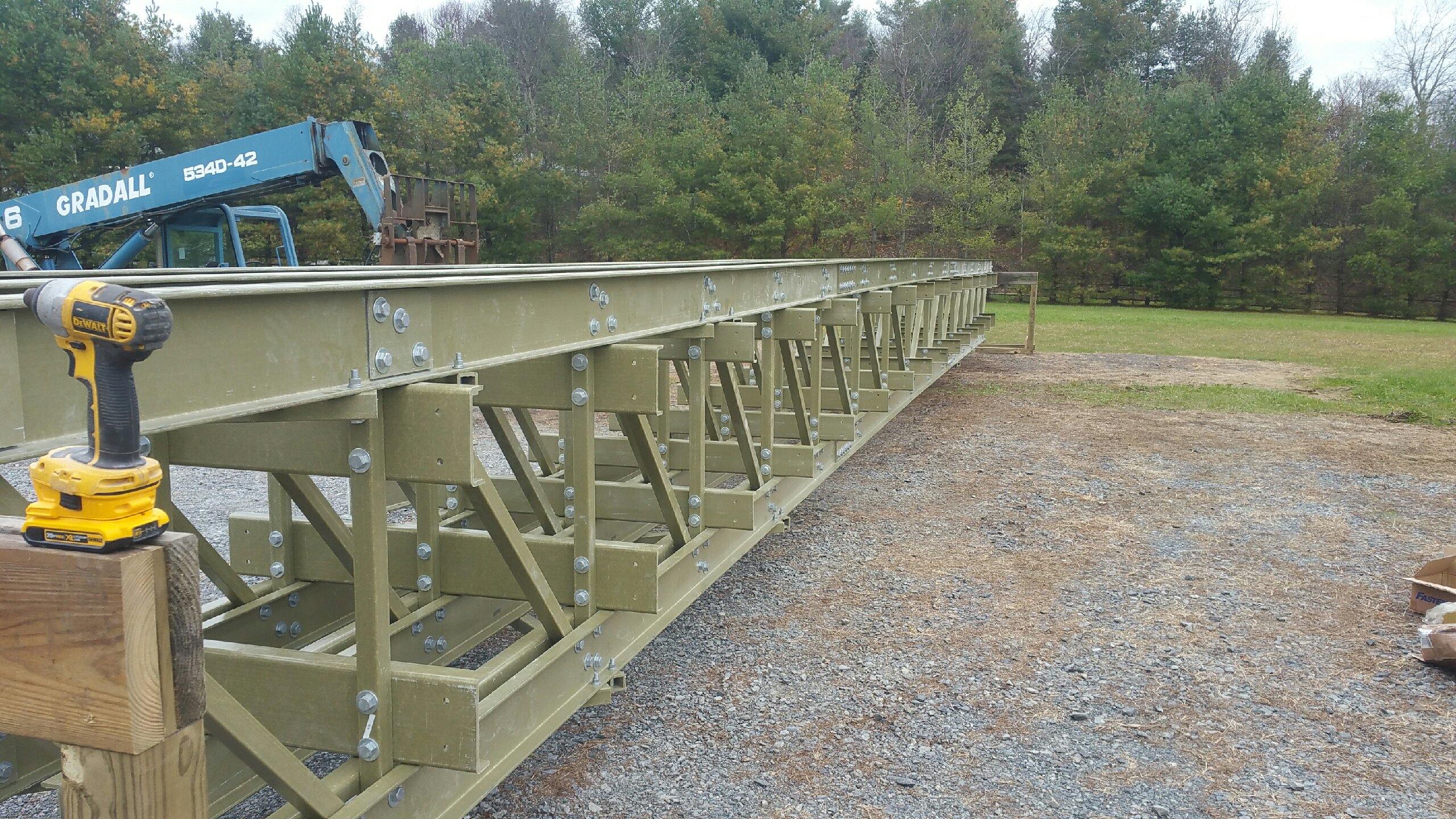When comparing two different types of bridge materials for a pedestrian bridge, there are several consideration factors.
FRP vs. steel pedestrian bridge: You will need to consider the following factors:
- Material weight
- Material strength
- Ease of construction
- Material cost
- Bridge lifespan
What is FRP?
Fiber reinforced polymer, or FRP, is a relatively new product for pedestrian, equestrian, and lightweight vehicle bridges. It’s a lightweight material with numerous advantages over other bridge materials typically used for pedestrian bridges.
Material Weight: FRP vs. Steel
The bridge material weight is a major contributing factor during the bridge construction process.
FRP Material
FRP bridge components weigh approximately 125 pounds per cubic foot, making it a quarter of steel’s weight. Its lightweight components allow builders to hand carry or airlift them to the bridge construction site (making it an excellent option for remote bridge sites).
Steel Material
Steel bridge components weigh approximately 500 pounds per cubic foot. Due to the heavy components, you will need to use heavy equipment to move them to the bridge site and during the construction process.
Material Strength: FRP vs. Steel
The bridge material strength helps determine the bridge’s ability to withstand the elements (i.e., vehicles, weather, animals).
FRP Material
FRP is approximately 60% of the tensile and compressive strength of steel. FRP’s properties are quite strong; it has approximately 10% of the modulus of elasticity.
The Areté Structures team adjusts to the FRP’s unique design constraints by:
- Using truss shapes to create deep structural members to overcome the low modulus of elasticity.
- Building mechanical camber into the bridge so that there is no “sagging” in the bridge.
- The top chords are fabricated with a bigger radius than the bottom chords.
- For example, the spacing of the holes in the top chord is greater than in the bottom chord. The result is that after initial dead load deflections, you will still have a positive camber.
Steel Material
The compressive strength of steel is approximately 250 MPa.
Ease of Bridge Construction: FRP vs. Steel
The bridge construction process helps to determine:
- If skilled or unskilled labor is needed
- If hand tools or power tools are needed
- How long/complex is the transportation process of bridge components
FRP Material
Easily construct FRP bridges with hand tools and unskilled labor.
Steel Material
Steel bridges require heavy equipment and skilled workers.
Material Cost: FRP vs. Steel
Compare the bridge material cost to the bridge construction process to determine overall cost.
FRP Material
The initial cost for FRP materials is higher than steel, but the lower construction cost offsets the material cost.
Steel Material
The initial cost for steel materials is lower than FRP, but there is a higher construction cost associated with steel.
Bridge Lifespan: FRP vs. Steel
Compare the bridge lifespan and ongoing maintenance to determine overall cost.
FRP Material
FRP boasts a 100+ year lifespan and is:
- Durable
- Corrosion-resistant
- UV resistant
- Easy to maintain
Steel Material
Steel has an approximately 100-year lifespan and will corrode over time, and it is challenging to transport replacement parts.
Conclusion: FRP vs. Steel Pedestrian Bridge
After reviewing FRP vs. steel pedestrian bridges, FRP is the ideal material option for pedestrian bridges!
Taking the Next Step with Areté Structures
When you’re ready to move forward on your pedestrian bridge project, connect with the Areté Structures team. We will help assess your bridge requirements and provide you with a quote on your next bridge project.
Contact us or request a quote to get started.

